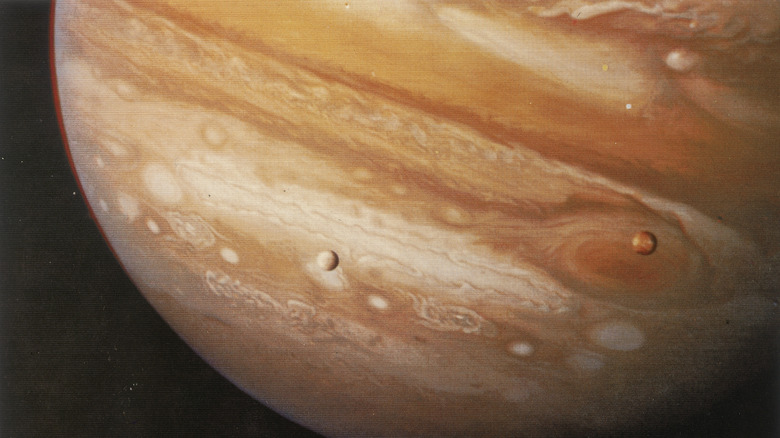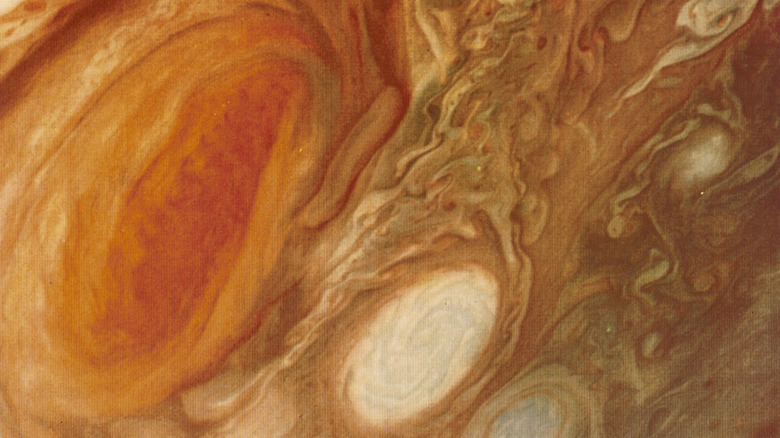The Mystery Of Jupiter's Great Red Spot
Beyond Saturn's rings and the craters of the moon, no feature in our solar system is as widely recognized as Jupiter's Great Red Spot. Many might know that the spot is a massive storm, a hurricane wider than our entire planet that's been raging for centuries, possibly longer (via Space.com). The storm was first properly observed in 1831, but references to a "Permanent Storm" date back to the 1600s, potentially indicating that the Great Red Spot has been raging for at least 400 years.
The center of the storm is relatively calm, but things get hectic around the edges, where wind speeds can reach up to 425 mph, more than double the strongest winds on Earth. The storm is caused and contained by the moving atmospheric bands of the gas giant. It exists between two bands moving in opposition to each other, which keep the storm spinning indefinitely. Scientists aren't sure when — or if — the storm will dissipate, as there are still too many mysteries surrounding our largest planetary neighbor.
A lack of solid surface keeps the storm running
The size and scope of the storm is constantly changing, making it difficult to pin down, as the differences between Earth and Jupiter are so substantial that our understanding of storms and hurricanes doesn't really apply. For one, hurricanes on Earth weaken and eventually break up once they reach land, but Jupiter is a gas giant that has no solid surface. Scientists believe an ocean of liquid hydrogen exists near Jupiter's core. Because of this, the Great Red Spot reaches a depth of around 200 miles, over 20 times as deep as the average hurricane on Earth (via NASA).
The Great Red Spot shrinks and grows but has been gradually getting smaller over the years, suggesting the most famous storm in the solar system might be breaking apart. It's also been changing color, becoming a more intense orange, for reasons scientists haven't fully figured out yet. It's theorized that the storm will continue to shrink, and maybe even disappear completely one day, although no timeline has been given for the storm's demise, if it even happens. There's still not enough information about Jupiter to make an accurate assumption, but it's possible one day Jupiter will tower over the cosmos without its famous blemish.

